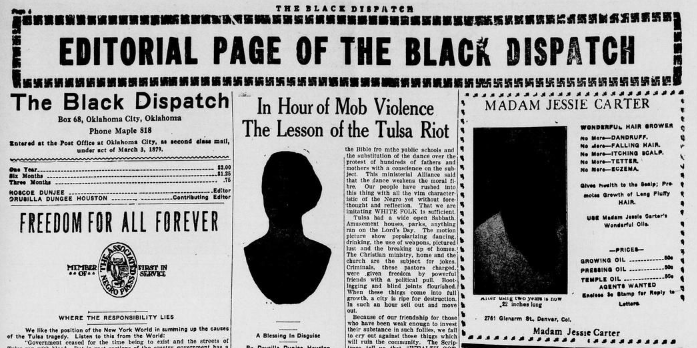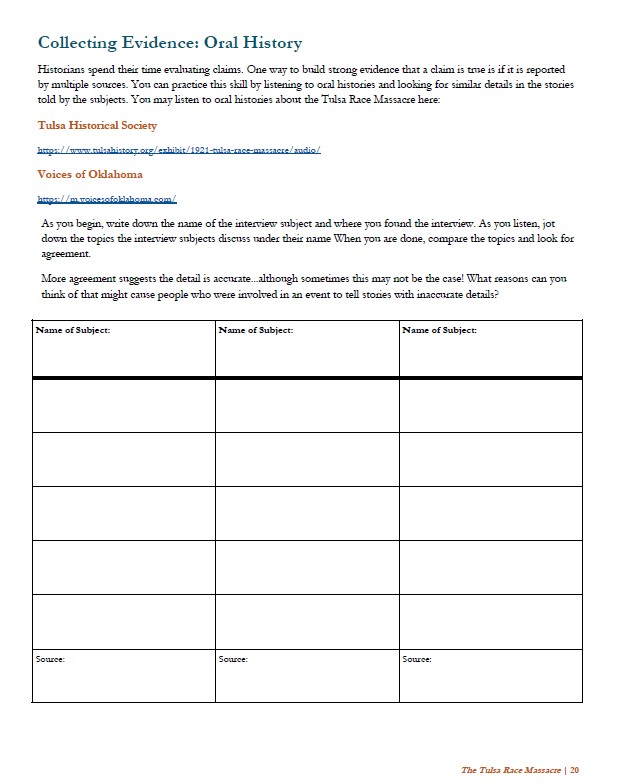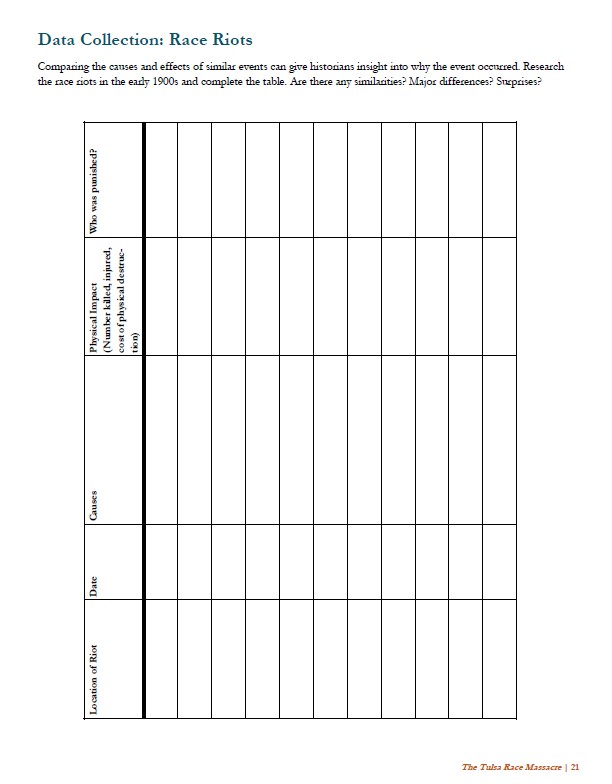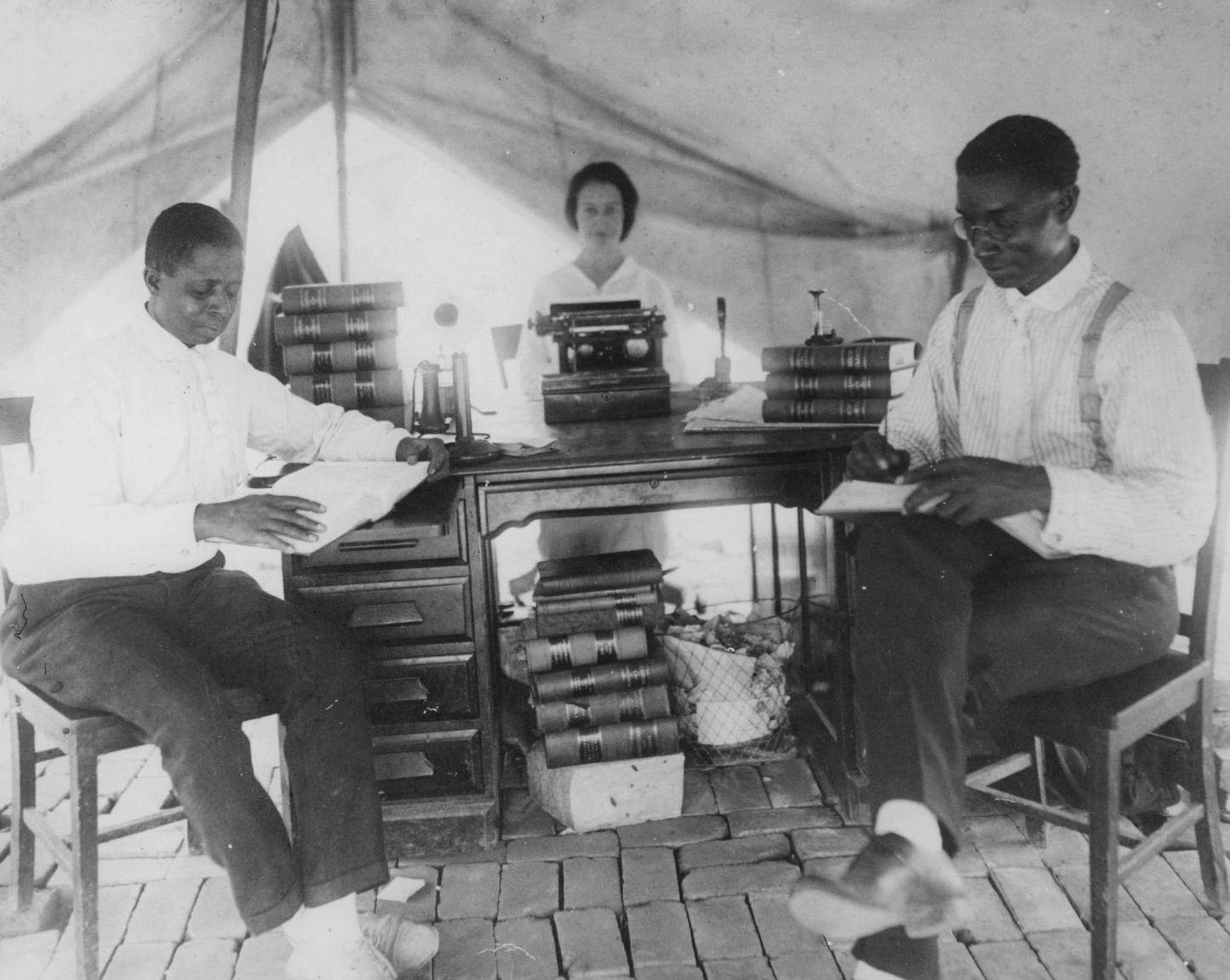
The Tulsa Race Massacre
Activities
Reading with a Purpose: The Black Press

Several African American communities in Oklahoma offered their own newspapers. The most important of these newspapers is the Black Dispatch, produced by editor and civil rights activist Roscoe Dunjee. Explore the editorial page of the June 17, 1921, issue of the Black Dispatch at https://gateway.okhistory.org/ark:/67531/metadc152337/
- In “Where the Responsibility Lies,” what does the author identify as contributing to the violence?
- What is the main idea of “Fight it Out in the Courts”?
- What argument does Drusilla Dunjee Houston make in “A Blessing in Disguise”?
- Why do you think Houston makes this argument to Oklahoma’s African American population at this time?
Explore other examples of the African American press in Oklahoma to examine how they viewed the Tulsa Race Massacre.
- The Muskogee Cimeter https://gateway.okhistory.org/explore/collections/MUSKC/
- The Oklahoma Guide https://gateway.okhistory.org/explore/collections/OKGD/
- Tulsa Star https://gateway.okhistory.org/explore/collections/TULSA
Collecting Evidence: Oral History
Historians spend their time evaluating claims. One way to build strong evidence that a claim is true is if it is reported by multiple sources. You can practice this skill by listening to oral histories and looking for similar details in the stories told by the subjects. You may listen to oral histories about the Tulsa Race Massacre here:
Tulsa Historical Society
https://www.tulsahistory.org/exhibit/1921-tulsa-race-massacre/audio/
Voices of Oklahoma
https://m.voicesofoklahoma.com/
As you begin, write down the name of the interview subject and where you found the interview. As you listen, jot down the topics the interview subjects discuss under their name When you are done, compare the topics and look for agreement.
More agreement suggests the detail is accurate...although sometimes this may not be the case! What reasons can you think of that might cause people who were involved in an event to tell stories with inaccurate details?

Download Collecting Evidence: Oral History Activity (PDF)
Data Collection: Race Riots
Comparing the causes and effects of similar events can give historians insight into why the event occurred. Research the race riots in the early 1900s and complete the table. Are there any similarities? Major differences? Surprises?

Download Data Collection Activity (PDF)
Developing an Argument: Taking a Stand
Explore recent material on one of the elements of the Tulsa Race Massacre that continues to generate controversy. Educate yourself on the positions. Decide if you agree with one of the positions or if you believe something different. Write an essay in which you take a strong position on the controversy and explain the reasons why you have come to your conclusion. Don’t forget to include the historical information that supports your points. Pretend you are preparing an argument in a case, just as B. C. Franklin had to do many times in his career as a lawyer.

B. C Franklin, I. H. Spears, and Effie Thompson (image courtesy of the Tulsa Historical Society).

